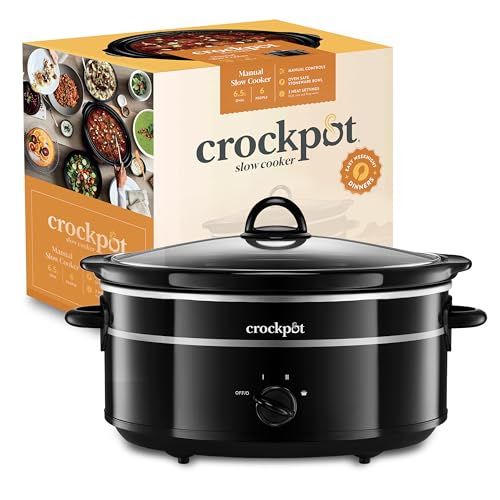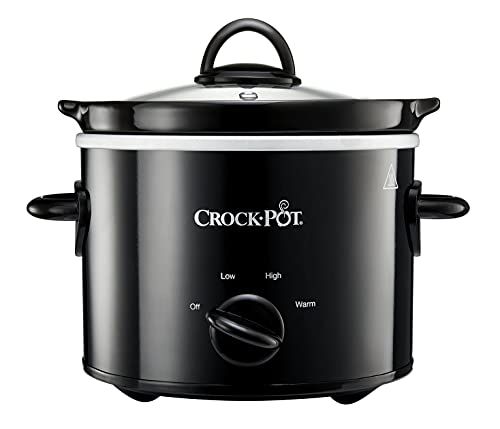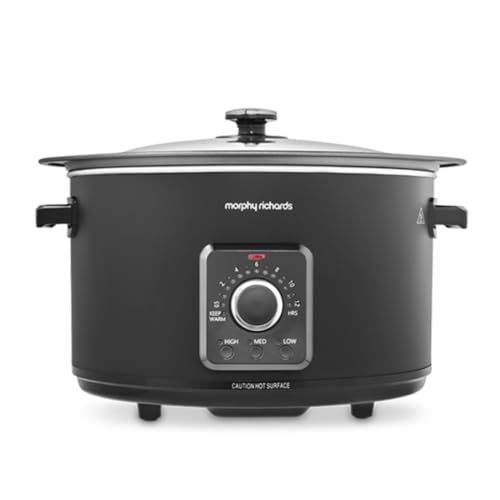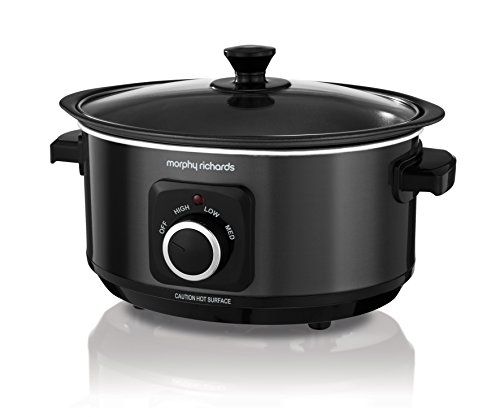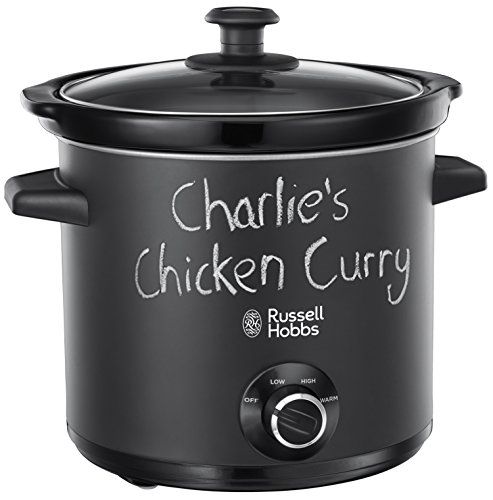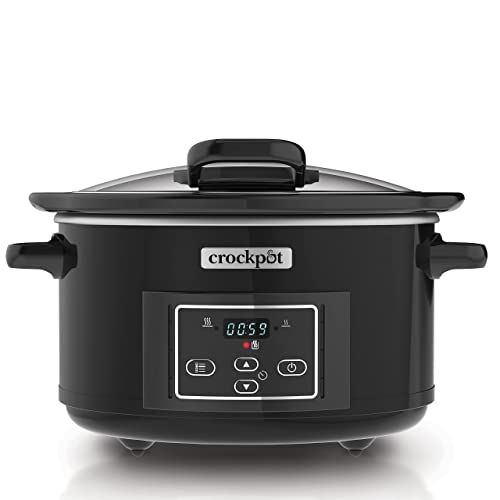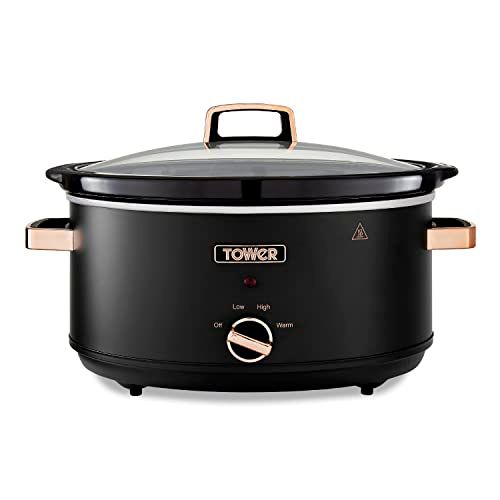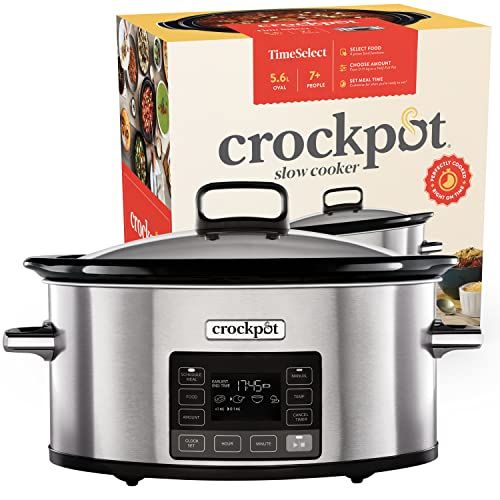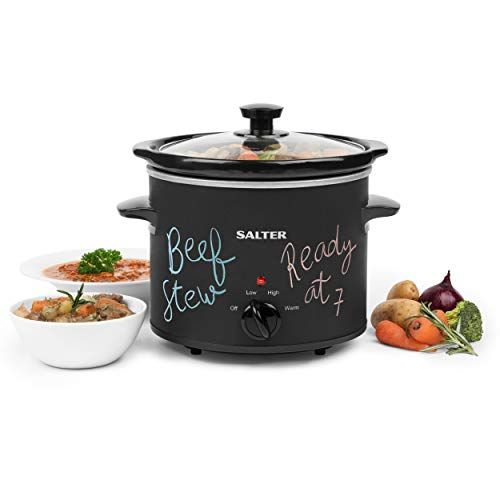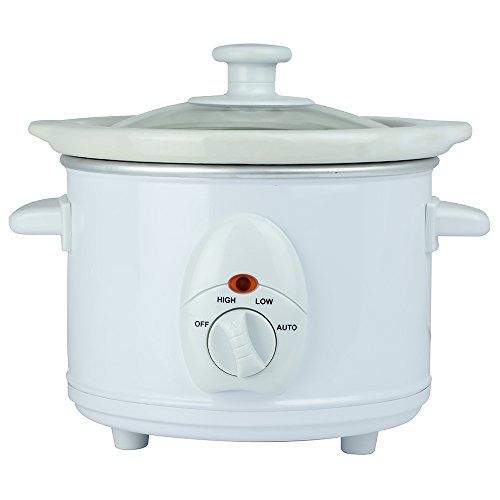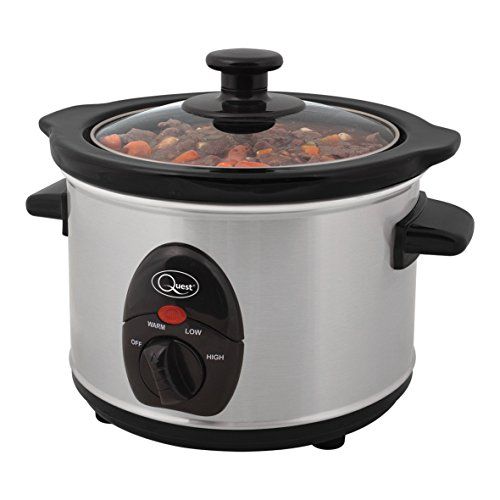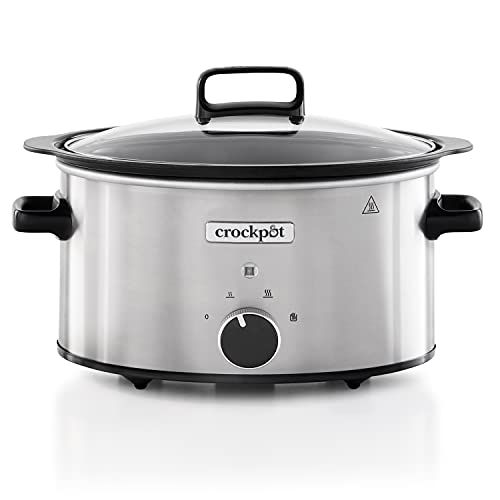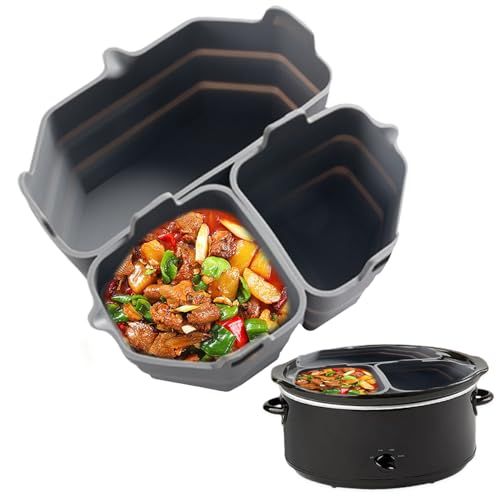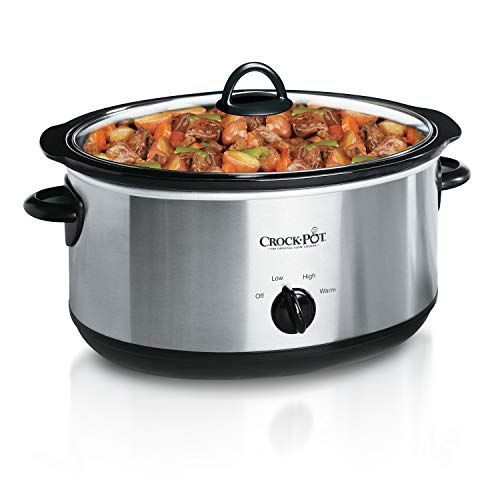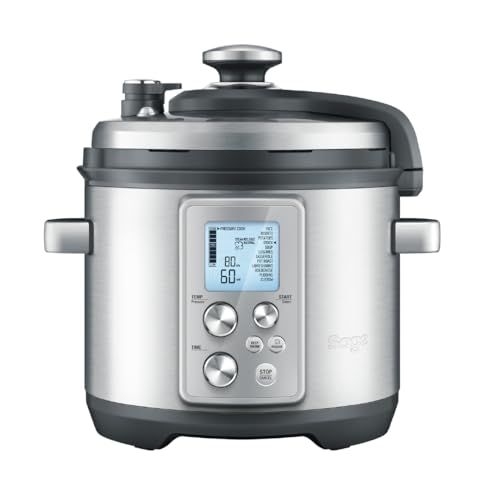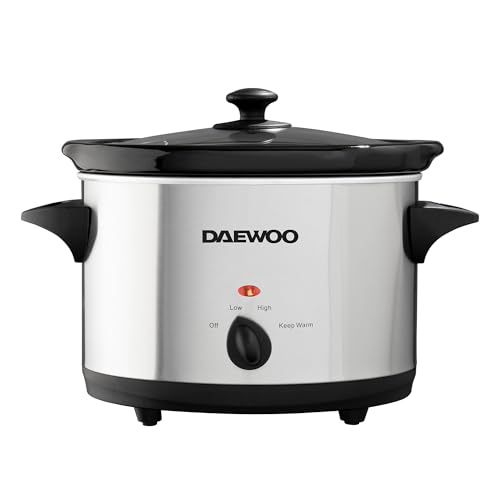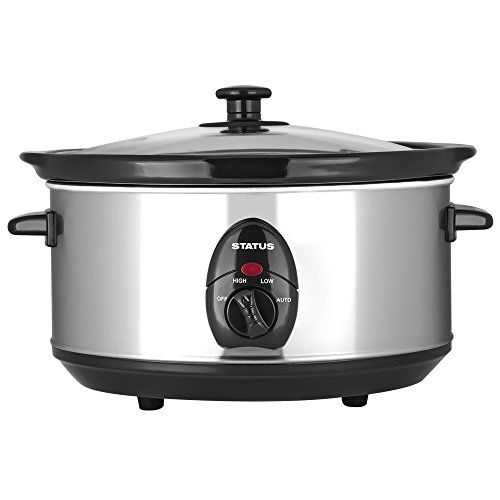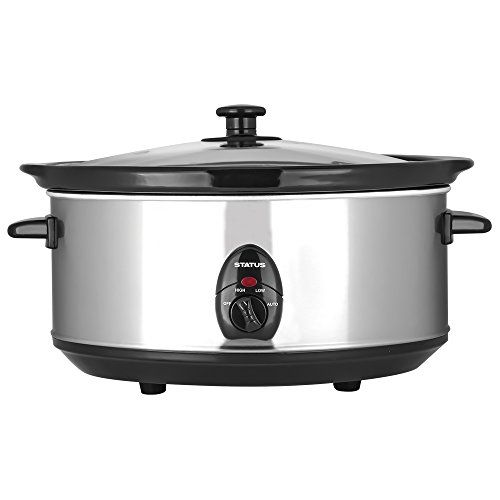
A slow cooker is a countertop electric appliance used for long, low temperature cooking of foods. It consists of a lidded ceramic or metal vessel and a heating element. Food is placed in the cooker, covered with a lid, and left to cook at a low temperature (typically between 170-280F) for an extended period of time.
The origins of slow cooking date back thousands of years to clay pot cooking. In the 1970s, the Rival Company trademarked the term "Crock-Pot" and popularized the use of electric slow cookers for the home kitchen. This allowed busy cooks to prepare a meal by simply putting ingredients in the cooker in the morning and letting it cook all day.
The key benefits of using a slow cooker include:
Convenience - food cooks unattended while you're away
Tender, moist results - long cooking times break down connective tissues
Economical - cheaper cuts of meat become tender and flavorful
Energy efficient - uses less electricity than an oven
Versatile - wide range of ingredients and recipes
Today, slow cookers remain popular for their convenience and ability to infuse foods with flavor. They can be utilized for stews, soups, chilis, roasts, desserts and more. With minimal prep in the morning, cooks can arrive home to a complete, home-cooked meal after a busy day.
How Slow Cookers Work
Slow cookers use a simple mechanism to cook food over a long period of time. At the base of the slow cooker is a heating element that applies a low, steady heat to the contents. This heating element cycles on and off to maintain a consistent temperature inside the slow cooker.
The lid of the slow cooker forms a tight seal, which traps steam and moisture inside. This moist environment essentially braises the food, resulting in very tender and flavorful dishes. Unlike oven or stovetop braising, slow cookers do this without needing to monitor or adjust the cooking temperature.
Slow cookers are designed to cook food slowly over many hours. A typical cooking time is 6-8 hours on low heat or 4-6 hours on high heat. This long cooking duration breaks down connective tissues in tougher cuts of meat, resulting in fork-tender dishes like stews, chilis, and roasts. The low and steady heat helps develop complex layers of flavor as the ingredients mingle together.
Types of Slow Cookers
Slow cookers come in a variety of models with different features and capacities to suit different needs and budgets. Here are the main types:
Basic Models
Basic slow cookers have simple manual controls with Low, High, and Warm settings. You set the temperature and cooking time yourself. These are ideal for those wanting an affordable and easy-to-use appliance. However, you need to be around to turn it off when done.
Programmable Models
Programmable slow cookers allow you to preset the cooking temperature and time. Once the time is up, they automatically switch to warm mode. This makes them very convenient for timing your meals. Some have digital displays and timers, while others just have a dial to select the cooking time.
Sizes and Capacities
Slow cookers come in small (3-4 quarts), medium (5-6 quarts), and large (7+ quarts) sizes. The ideal size depends on your needs. Small is good for singles, couples, and appetizers. Medium works for families and larger batches. Large is best for big groups and meal prepping.
Extra Features
Higher-end models have extra features like:
Probe thermometers to monitor internal food temperature
Stovetop-safe inserts for browning and simmering
Digital displays with countdown timers
Automatic keep-warm functions
Programmable time delays
Non-stick coatings for easy cleaning
So consider what features would be most useful for your cooking needs and budget. The fancier models make slow cooking even more convenient!
Benefits of Using a Slow Cooker
Slow cookers offer many benefits that make them a convenient and useful appliance for any home cook. Here are some of the top reasons to use a slow cooker:
Hands-Off Cooking - Once you've prepped and added your ingredients to the slow cooker, it does all the work for you. You can simply set it and forget it, allowing you to go about your day while it cooks. This makes it great for busy schedules.
Energy Efficient - Slow cookers use less energy than an oven or stovetop. Because they cook at lower temperatures over longer periods, they can save you money on your energy bills.
Tenderizes Cheaper Cuts of Meat - The long cooking times allow cheaper cuts of meat to become fall-off-the-bone tender. Cuts that would be tough or chewy if cooked quickly become delicious when slow cooked.
Flexible and Portable - Most slow cookers are lightweight and easy to transport to potlucks, parties, or anywhere you need to cook. They also give you flexibility to start cooking in the morning or evening and have it ready whenever you need it.
With their convenience and versatility, it's easy to see why slow cookers remain a staple appliance in many homes today. They make cooking tasty meals simple, even for the busiest schedules.
Drawbacks of Slow Cookers
While slow cookers provide many benefits, there are some potential drawbacks to be aware of:
Long Cook Times
The main drawback of slow cookers is the long cook times required. Most recipes need between 4-8 hours on low or 2-4 hours on high. This means you need to plan your meals in advance and get ingredients prepped ahead of time. It's not ideal for quick weeknight dinners or last-minute meals. The prolonged cooking also uses more electricity over time.
Can't Brown or Sear Food
Since slow cookers don't get hot enough, you can't brown or sear meat and vegetables right in the crockpot. Browning adds richer flavor, color and texture. Most recipes will instruct you to brown the meat first on the stove top before adding to the slow cooker. This adds an extra step.
Potential Food Safety Issues
Keeping food at low temperatures for many hours can potentially lead to food safety issues if not done properly. It's important to use recipes specifically formulated for slow cookers. The key is reaching and maintaining safe internal temperatures. You also need to take care not to contaminate foods by tasting and adding seasonings throughout the cooking process.
Best Practices and Tips
When using a slow cooker, following some best practices can lead to better results. Here are some top tips:
Proper Filling - Don't overfill or underfill the slow cooker. As a general rule, fill the slow cooker 1⁄2 to 3⁄4 full for the best results. Overfilling can lead to boiling over or uneven cooking. Underfilling may lead to drying or burning of food.
Layering Ingredients - Layer ingredients from dense to light. Place vegetables on the bottom, then meat, and finally rice, pasta or dumplings. This allows even cooking and proper absorption of liquid.
Using the Right Heat Setting - Use the correct heat setting for what you are cooking. High heat is best for cuts of meat, beans, and root vegetables. Low heat works well for delicate seafood and dairy-based dishes. Consult your manual.
Food Safety - Use a food thermometer to ensure meats reach a safe internal temperature. Keep the lid on during cooking. Don't use a slow cooker to reheat food. Refrigerate leftovers within 2 hours.
Following best practices when using your slow cooker leads to great results every time. Properly filling, layering ingredients correctly, choosing the right heat setting, and using proper food safety methods are key. With the right techniques, your slow cooker can deliver delicious healthy meals with minimal effort.
Common Slow Cooker Recipes
Slow cookers are incredibly versatile appliances that can be used to make a wide variety of delicious dishes. Here are some of the most common recipes people make in their slow cookers:
Soups and Stews
Slow cookers are ideal for making soups and stews. The low, slow cooking allows flavors to meld together beautifully. Popular soup recipes include chicken noodle soup, vegetable beef soup, minestrone, chili, and potato soup. For stews, try classics like beef stew, chicken stew, or hearty bean and vegetable stews.
Beans
Dried beans cook up perfectly in the slow cooker. Simply add beans, water or broth, and seasonings and let them cook until tender. Favorites include baked beans, red beans and rice, white beans, and chickpeas. Slow cookers can also be used to make dips like hummus.
Roasts
Tough cuts of meat become fall-apart tender after several hours in the slow cooker. Pot roasts, pork roasts, and beef brisket are especially delicious and inexpensive options. Surround the meat with vegetables like potatoes, carrots, onions, and celery for a complete meal.
Chilies and Curries
Complexly flavored dishes like chilies, curries, and mole sauce develop wonderfully in the slow cooker. Try recipes for chili con carne, green chili chicken, beef curry, lentil curry, and chicken tikka masala. The slow cooker allows time for the spices and aromatics to permeate the dish.
Desserts
Believe it or not, slow cookers can even be used to make desserts! Cobblers, cakes, custards, bread pudding, and even cheesecake can be made in a slow cooker. The gentle heat prevents scorching and yields moist, tender results. Popular options include apple crisp, chocolate lava cake, and peach cobbler.
Slow Cooking DO's and DON'Ts
When using a slow cooker, following some basic guidelines will ensure you get the best results. Here are some dos and don'ts to keep in mind:
DO defrost meats before adding them to the slow cooker
Meats should always be fully thawed before cooking in the slow cooker. This allows them to cook through evenly. Adding frozen meats can lead to unsafe temperatures and undercooked food.
DON'T lift the lid unnecessarily
Lifting the lid frequently releases heat and moisture, resulting in longer cook times. Only remove the lid to stir, check for doneness, or add additional ingredients as needed. Avoid lifting the lid more than necessary.
DO add enough liquid
Slow cookers require added liquid to create steam and tenderize foods. Use the amount of liquid specified in recipes, usually 1-2 cups of broth, water, or other sauce. Adding too little liquid can lead to burning and overcooking. Check during cooking and add more if needed.
DON'T overfill the slow cooker
Fill the cooker no more than 2/3 full for meats and vegetables. Overfilling won't allow food to cook evenly and can hinder food safety. Make sure there is adequate room for food to heat and simmer properly.
DO brown meats before adding to the slow cooker
Browning meats first adds flavor and color. It also helps retain moisture in the slow cooking process. Take the extra step to sear meats on the stove before adding to the slow cooker.
Following these simple dos and don'ts will lead to slow cooker success! Let your cooker work its magic by using proper techniques.
Care and Cleaning
Proper care and cleaning is essential to keep your slow cooker working efficiently for years to come. Here are some key tips:
Clean your slow cooker after every use. Food particles left behind can bake on over time and be very difficult to remove. Allow the insert to cool, then wash it with hot soapy water. Use a soft sponge or cloth to gently clean - abrasive scouring pads can scratch the surface.
Check the gasket or sealing ring after each use. Remove any food bits caught in it. Let the gasket air dry thoroughly before replacing to prevent mold growth. Replace worn or cracked gaskets to ensure a tight seal.
Never immerse the slow cooker base in water or try to wash it in the dishwasher! The electrical components could short out and ruin the appliance. Simply wipe down the outside of the base as needed with a damp cloth or paper towel.
For stubborn baked-on stains, fill the insert with warm soapy water and let it soak for an hour before scrubbing clean. For really tough buildup, make a paste of baking soda and water and apply to the stain - let sit before scrubbing.
Avoid using harsh chemicals or abrasive cleaners on your slow cooker insert. They can damage the protective coating.
Always check that your slow cooker is completely dry before storing away. Leave the lid off so air can circulate and moisture can evaporate.
Proper care will help your slow cooker work like new for many years! Be sure to clean thoroughly after each use, check seals, and never submerge the base in water. Treat it with care and your slow cooker will deliver delicious meals for a long time.
Conclusion
Slow cookers are an excellent addition to any kitchen. As we've discussed, they provide a number of key benefits that make them a versatile and affordable cooking appliance.
To recap, slow cookers allow you to prepare tasty one-pot meals with minimal effort. You simply add your ingredients in the morning and come home to a hot, ready-to-eat dinner. The low, slow cooking renders meats incredibly tender and brings out the flavors of soups, stews, chilis, and more.
Slow cookers are suitable for many recipes and lifestyles. They can accommodate a range of dietary needs with options like vegetarian chili or dairy-free curries. Busy families can throw everything in before work and school. And they require minimal monitoring, freeing up your time for other tasks.
Finally, slow cookers represent an affordable way to cook delicious home-cooked meals. The appliances themselves are inexpensive, as are the simple ingredients called for in many slow cooker recipes. Compared to dining out or buying pre-made meals, you get more food for your money.
With all these advantages, it's easy to see why slow cookers remain a staple item in many households today. They take the stress out of dinner, letting you come home and enjoy time with your family.
Slow Cookers comparison
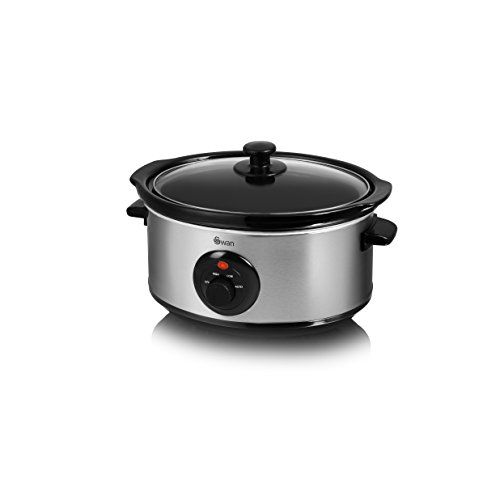 |  |  | 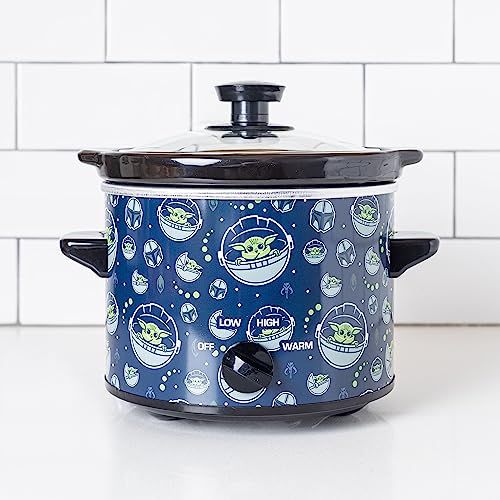 | 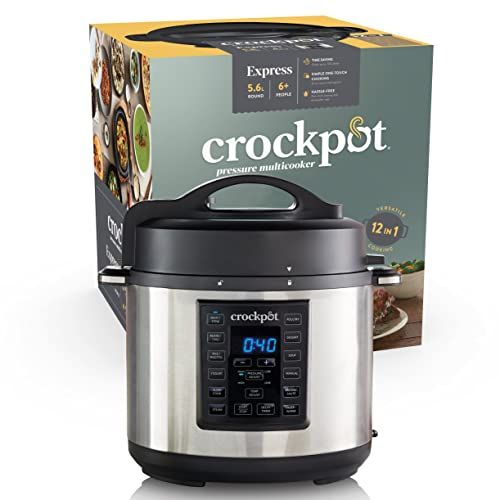 | |
|---|---|---|---|---|---|
| Model | SWAN SF17020N | Cookworks 2W-GAC8-CAOP-TR | Calphalon SCCLD1 | Uncanny Brands SC2-SRW-MAN1 | Crock-Pot CSC051 |
| Brand | SWAN | Cookworks | Calphalon | Uncanny Brands | - |
| Capacity | 3.5 litres | 3.5 litres | 5.3 quarts | 2 quarts | 5.6 litres |
| Colour | Silver | - | Dark Stainless Steel | Dark Blue | - |
| Item Weight | 3.69 kg | 1 kg | 4.38 kg | 2.27 kg | 5.8 kg |
| Material | Glass | Ceramic | Stainless Steel | Stoneware | Stainless steel |
| Model Number | SF17020N | 2W-GAC8-CAOP-TR | SCCLD1 | SC2-SRW-MAN1 | CSC051X-01 |
| Voltage | 220 Volts | 220 Volts | 120 | 220 Volts | 220 Volts |
| Shape | Oval | - | Round | Round | - |
| Wattage | 200 watts | 200 watts | 220 watts | 120 watts | 1000 watts |
| Pattern | - | Solid | Solid | Cartoon | - |
| Price | £25.25 | - | £338.42 | £47.23 | £161.58 |
FAQ
What is a slow cooker?
A slow cooker is an electric countertop appliance that cooks food at a low temperature for a long period of time. It typically has a ceramic or stoneware pot that sits inside a metal housing. The pot can be removed for serving at the table. Slow cookers are ideal for cooking tougher, cheaper cuts of meat as the long cooking time tenderises them. They are also great for making soups, stews, chilis, and braised dishes.
What are the benefits of using a slow cooker?
Slow cookers have many benefits. They allow you to prepare a meal early in the day and come home to a hot, ready-to-eat dinner. They save time and effort as you don't have to stand over a stove and monitor the cooking. The low, gentle heat also helps retain moisture, keeping food tender and full of flavour. Slow cookers require less energy than using the stove or oven. And the sealed environment means your kitchen stays cooler on hot days.
How do you use a slow cooker?
Simply prepare your ingredients and add them to the slow cooker pot. Cover and cook on low or high for the recommended time, typically 4-10 hours on low or 2-6 hours on high. Make sure the cooker is at least half full for best results. Some models have a warm setting to hold food after cooking. Avoid lifting the lid during cooking as this releases heat and increases cooking time. Stirring isn't necessary but you can check and stir near the end.
What types of food can you make in a slow cooker?
Almost anything! Common dishes are stews, curries, chillis, soups, braised meats, beans, grains, and even desserts. Meat and poultry become fall-off-the-bone tender. Dried beans can cook without soaking. You can make pot roasts, pulled pork, beef bourguignon, coq au vin, lentil soup, baked apples, steel-cut oats, and more. Get creative!
Can you leave a slow cooker on all day or overnight?
Yes, slow cookers are designed to cook food safely on low for long periods. However, don't leave perishable foods like meat and dairy sitting out before cooking. Make sure to refrigerate them first. And always thaw frozen ingredients before adding to the cooker. Once the food is done, switch to warm or unplug and refrigerate leftovers within 2 hours.
How do you clean a slow cooker?
The stoneware insert can be washed by hand or in the dishwasher. To remove stuck-on food, fill with warm soapy water and let soak before scrubbing clean. Do not immerse the metal housing in water or wash it in the dishwasher. Wipe it down with a damp cloth or cleaning spray. Be sure to unplug and fully dry both parts after cleaning.
Can you cook frozen food in a slow cooker?
Yes, you can cook frozen vegetables, sauces, and meats in the slow cooker but make sure to add extra cooking time. The frozen food will lower the temperature and slow down the initial heating. For cuts of meat, add about 50% extra time on low or 30% on high. And always make sure frozen foods are fully thawed and heated through before serving.
What are some slow cooker safety tips?
Don't overfill past the max fill line or remove the lid unnecessarily
Keep the cooker away from water and surfaces that can be damaged by steam
Take care when lifting and moving the ceramic insert once hot
Make sure food is cooked thoroughly before serving
Unplug when not in use and follow manufacturer instructions
How do you adapt traditional recipes for the slow cooker?
Reduce the amount of liquid slightly since there is less evaporation
Add dairy products like milk or cream towards the end
Cook pasta, seafood, and veggies separately and add at the end
Brown meats first for more flavour and colour
Use root veggies and cubed pieces to help cook evenly
Season well with herbs and spices which intensify over time
What size slow cooker do I need?
Small 1.5-2.5 litres - cooks for 1-2 people
Medium 3.5-5 litres - good for 3-4 people
Large 6+ litres - best for 4+ people or big batches
Consider your household size, the amount you cook, and whether you'll use it for entrees, appetizers, or side dishes. A medium or large size offers the most versatility for most home cooks.
